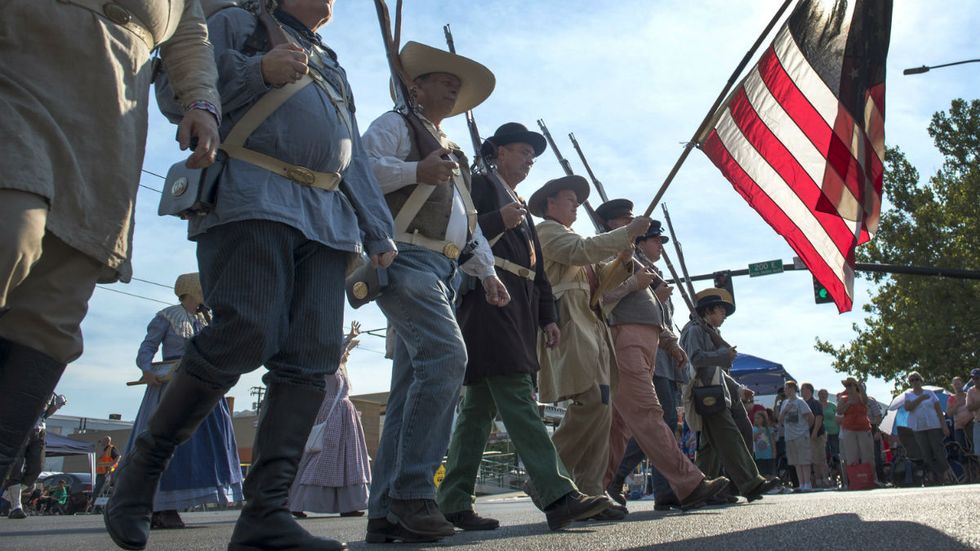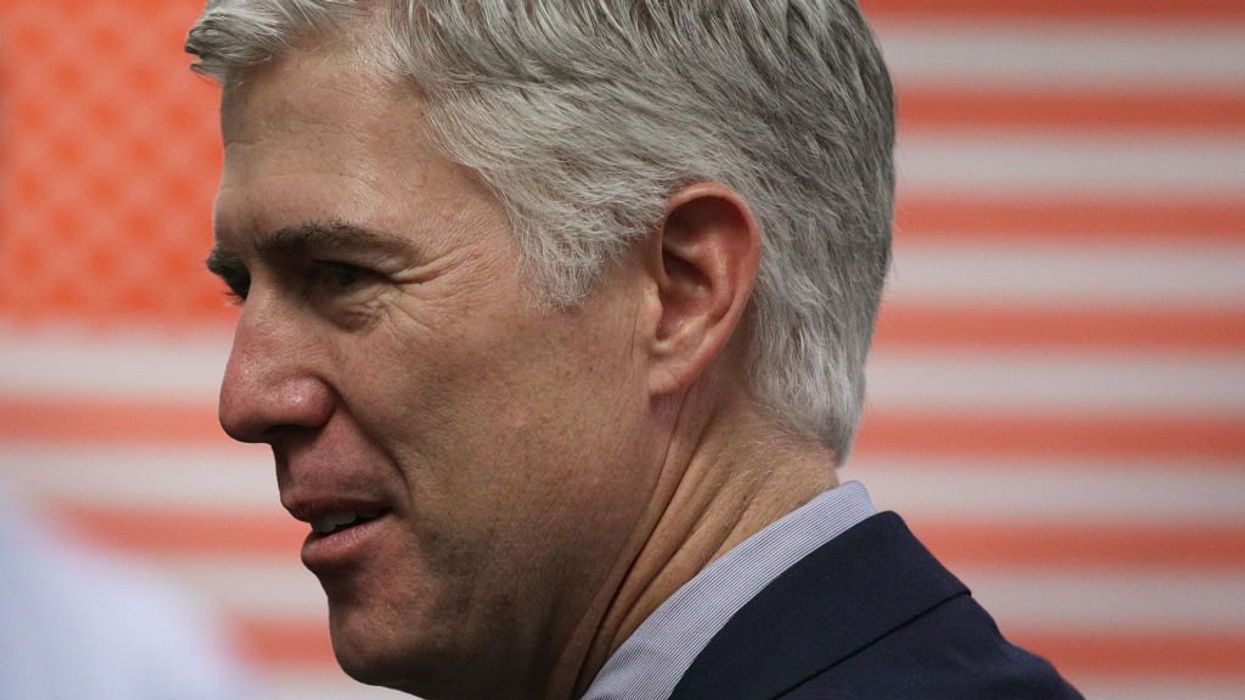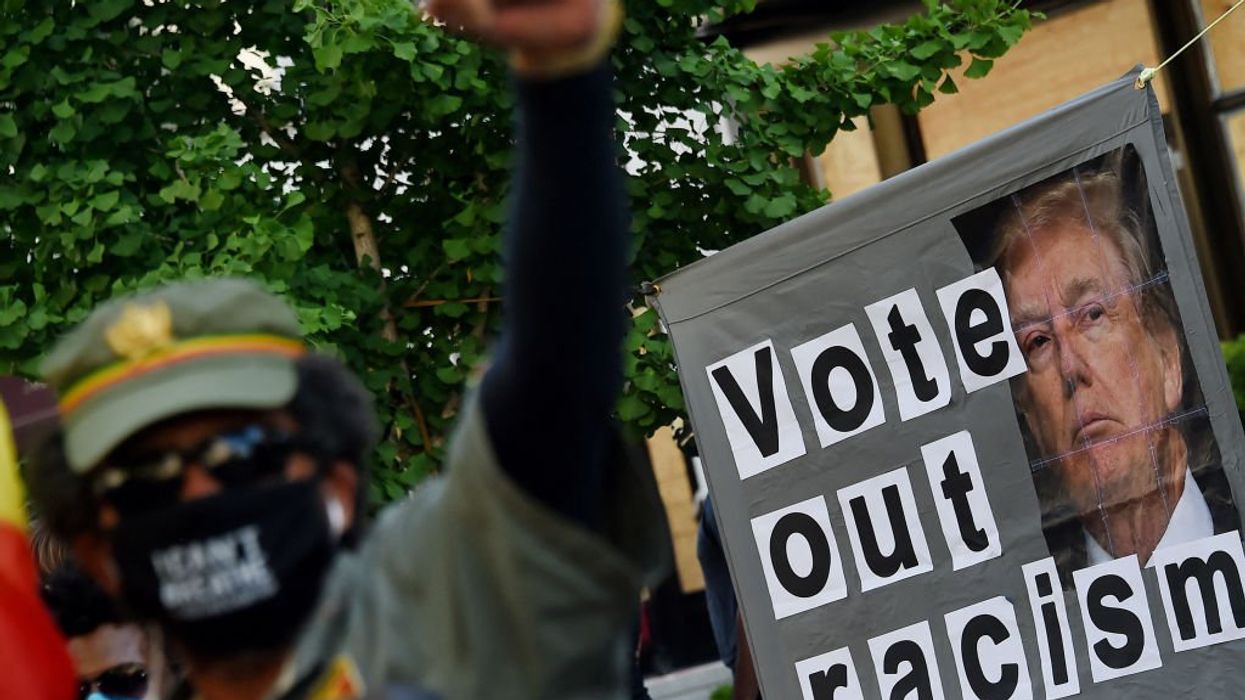
© 2024 Blaze Media LLC. All rights reserved.
The role of religion in the military has become so prominent and sometimes contentious in recent years that the proponents of a separation of church and soldier, might be surprised to find that there was once a religiously-based unit within the U.S. Army. They also may be surprised to know that this unit completed the longest infantry march in U.S. history.
The story begins with a flight from religious persecution. The Mormon Battalion – as it is now known – was commissioned in 1846 as a result of Latter Day Saints leader Brigham Young and Jesse Little’s urging for federal assistance in the effort for Mormons still in the Midwest to join their brethren on the frontier and away from the religious intolerance they faced on the eastern half of the continent.
Not to be confused with the great LDS migration to Utah at about the same time, the march of the Mormon battalion started in Council Bluffs, Iowa before marching almost 2,000 miles southwest to San Diego.
Eventually, President James Polk agreed to assist the beleaguered believers by calling up a volunteer unit of about 550 men to serve in the war effort and make their way to California.
The benefits for the Latter Day Saints were many. In addition to being paid to make the journey and the provision of arms – which afforded safe passage across the terrain, and which members would be allowed to keep – members of the faith would be allowed to publicly demonstrate their loyalty and patriotism to the country during uncertain, persecution-heavy times. In return, Polk gained a column of able-bodied men to aid in the war effort against Mexico.
The march began in late July of 1846, where the unit departed Iowa for Fort Leavenworth, Kan. From there, they marched onward to Santa Fe, N.M., and eventually came to a conclusion at the Pacific Ocean at San Diego.
The length of the march itself was not the mission’s sole difficulty. Between Kansas and California, the column had to confront harsh terrain, illness, lack of food and medicine, as well as the exhaustion of both bodies and supplies.
It is for a combination of these reasons why hundreds of marchers – which were not limited to soldiers, as some family members came along, too – did not make it to the end of the journey and had to be sent back or left at outposts along the way. After months of hardship, the battalion eventually made it to the sea in January of 1847.
“Traveling in sight of the ocean, the clear bright sunshine, with the mildness of the atmosphere, combined to increase the enjoyment of the scene before us,” recalled Third Sergeant Daniel Tyler of their arrival years later.
“January there,” he continued, “seemed as pleasant as May in the northern States, and the wild oats, grass, mustard and other vegetable growths were as forward as we had been used to seeing them in June. The birds sang sweetly and all nature seemed to smile and join in praise to the Giver of all good.”
While the unit saw no combat during its tenure, the battalion did engage in a small skirmish with some wild bulls near the San Pedro River. Fortunately, casualties from the “Battle of the Bulls” were few – goring some draft animals and wounding two men before several of the bovine attackers were shot by members of the battalion.
One of the group’s peacekeeping operations took place in Southern California, where the unit was assigned to a peacekeeping mission to ensure ensured the tranquil repose of an untold number of fallen Native Americans after one of the bloodiest massacres in the region’s history.
In retaliation for the execution of 11 Californios (Mexican and Spanish descendants living in California at the time) the Mexican Army commander at the time ordered the Luisenos (a Native American tribe sympathetic to U.S. forces) killed.
After being lured into a steep canyon, the warriors were ambushed and somewhere between 30 and 100 Luisenos lay dead upon the ground. The actual death count remains a mystery, as subsequent weather conditions stymied recovery efforts.
But the heavy rains were not all that stopped the tribe from recovering their dead. "Local Indians were afraid to go back out there," said Darell Farnbach, president of the Vail Ranch Restoration Association, says in the report. "The bodies were left about three weeks."
That’s when the Mormon Battalion was passing through. The unit stood guard to allow the Luisenos could go retrieve and properly attend to their dead, according to an officer’s account.
One of the most significant contributions made by the unit, however, may have been an act construction, as the battalion were also trailblazers in the truest sense of the word.
After following mostly established routes through the first portion of the march, the battalion eventually came to an uninhabited, uncharted, and unforgiving portion of the country with no wagon trail. In order to complete their mission to the Pacific, the infantrymen then had to carve with sinew, shovel, and pickaxe a navigable road through what would become the Grand Canyon State, the Arizona Republic explains.
Today, the unit and this portion historic march is remembered by a trail marker topped with a wagon wheel located between Santa Fe and Albuquerque, N.M. Below a list of the deeds done by the unit read the words of an order from Lieutenant Colonel Philip St. George Cook, who led the unit upon its Santa Fe arrival:
“History may be search in vain for an equal march of infantry half of it has seen through a wilderness where nothing but savages [now omitted on the plaque] and wild beasts are found. or deserts where for want of water, there is no living creature there … Thus, marching half naked and half fed and living upon wild animals, we have discovered and made a road of great value to our country.”
Editor's note: An earlier version of this piece erroneously stated that the LDS migration took place "years before" the march of the Mormon Battalion rather than "at about the same time."
Want to leave a tip?
We answer to you. Help keep our content free of advertisers and big tech censorship by leaving a tip today.
Want to join the conversation?
Already a subscriber?
Nate Madden
Nate is a former Congressional Correspondent at Blaze Media. Follow him on Twitter @NateOnTheHill.
more stories
Sign up for the Blaze newsletter
By signing up, you agree to our Privacy Policy and Terms of Use, and agree to receive content that may sometimes include advertisements. You may opt out at any time.
© 2024 Blaze Media LLC. All rights reserved.
Get the stories that matter most delivered directly to your inbox.
By signing up, you agree to our Privacy Policy and Terms of Use, and agree to receive content that may sometimes include advertisements. You may opt out at any time.



